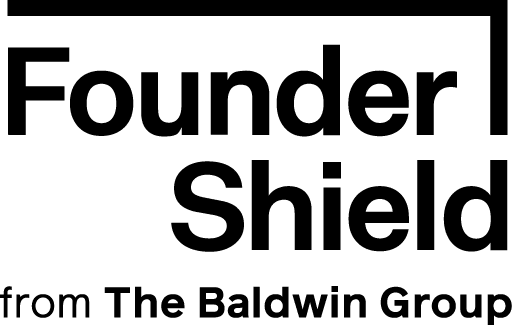Key Takeaways
As 2020 plays out, we’re experiencing benchmarks like never before. The COVID-19 pandemic, shelter-at-home orders, and forced business closures have all impacted our daily lives. Although these occurrences are mostly temporary, trends have surfaced that will continue to change our world for months and years to come.
Nearly every industry has been affected by the uncharted waters of Q2, leaving us with some significant updates to report. As with any life-changing experience, people are responding to the last few months in various ways. The same goes for the world of insurance. No matter if it’s life, auto, home, or commercial, the insurance industry is being forced to change rapidly to accommodate the massive shifts.
Strangely enough, insurance experts are interpreting these changes differently. When it comes to directors and officers (D&O) coverage — and insurance, in general — two schools of thought exist. Before we dive into varying market concepts, let’s look at newly developed factors that affect D&O premiums.
What Affects D&O Premium?
As reported in Q1, plenty of event-driven litigation and high profile cases remain underway. As a result, the traditional elements that have historically impacted D&O premiums have gone untouched. These factors include:
- Company size
- Number of employees
- Operating costs
- Business scope
- Market trends
- Company’s financial security
- Business ownership structure
Overall, the D&O industry is still considered a hard market and will continue to harden in the coming months. Rates, already pointing north before COVID-19 (which was needed to correct significant losses in prior years), have been driven even higher, particularly in the public D&O market. New variables have emerged amid the pandemic that will impact premiums, as well.
The COVID-19 Impact
Kevin LaCroix, attorney and executive VP of RT ProExec, sums it up best, “It is important to note in that regard that well before the coronavirus outbreak emerged, the D&O insurance marketplace was already disrupted.” More specifically, D&O premiums were on the rise to counteract inadequate pricing of the past. Yet, COVID-19 is causing unforeseen changes to play out, such as:
- Increased underwriting – Many insurers are including coronavirus-related questionnaires in their renewal applications. Also, some are requiring detailed information about the ways shelter-at-home orders have impacted business operations.
- Process inflexibility – Because of the unprecedented nature of this pandemic, many managers have stripped front-line underwriters of decision-making abilities. The demand for management approval has increased requests for extensions, and it’s all but bottle-necked the already time-consuming renewal process.
- Pricing – As mentioned, D&O premiums have been on the rise for a while now. However, we’ve seen a sharp increase in premiums — more than previously anticipated for this quarter — since COVID-19 hit our shores.
- Dilemma – With premiums increasing, management is caught in between paying higher premiums without incoming cash flow or dropping vital insurance coverage when they need it most.
- Exclusions – Some insurers are updating terms and conditions to include infectious disease exclusions. Others are defaulting to bankruptcy exclusions or creditor claims exclusions. The applicants facing the highest risks of these exclusions are the ones who are slow at submitting their coronavirus-related underwriting information because they are the ones who need the broadest coverage.
How Much Has D&O Pricing Changed?
For many businesses, revenue has taken a massive hit, and yet, premium costs are still on an upward trend. These numbers have left companies conflicted on what to do — opt for less coverage at a risky time merely to save on upfront costs or continue paying premiums from shallow pockets. Give the pickle many companies are in; here are a few other views on how D&O pricing has changed recently.
Two Schools of Thought
COVID-19 has undeniably launched a gloom and doom message across the globe, covering professional and personal lives. However, some insurance experts are noticing the benefits of the pandemic, which they say is impacting pricing overall.
According to Axios, “Insurance brokerage Willis Towers Watson estimates that the losses might be $30 billion under a ‘moderate’ scenario featuring six months of social-distancing controls and 3 million total deaths.” Although COVID-19 will likely cause loss, many believe insurance carriers are doing just fine.
For example, auto accidents have decreased significantly, with over 50% fewer vehicles on the road, so auto insurance companies are experiencing incredible gain right now As it goes, health insurance companies are seeing a profit, as well. Many surgeries and medical procedures have been indefinitely postponed, leaving health insurance carriers receiving premiums but paying out a lot less.
The main idea that Axios presents is that we might see a plunge in premium costs across the board because of the pandemic’s impact. On the one hand, this concept would include D&O costs as the savings would spread across the industry. But on the other hand, this idea might not come to fruition whatsoever, according to another panel of experts.
D&O Pricing Outlook
Sadly, businesses will shutter because of this pandemic. Some will go bankrupt while others will choose not to hang the open sign up again. Companies that get through these shaky times could face a D&O insurance market that’s in disarray.
Insurance experts who believe that the economy will hit the D&O market significantly don’t expect to see any savings ripple from other insurance products. Plus, according to LaCroix, we’ll likely be in a hard market well into 2021.
That said, transactions could be drawn out and complicated. The renewal process specifically might be more time-consuming and demanding than ever before. Executive management will need to spend more effort on their D&O insurance renewal, including detailed work-at-home business operations, service debts and account payables, reopening plans, etc.
Regarding pricing, management will likely need to lay aside previous experiences and expectations about D&O insurance because it’s all changing. Insurers’ cost of paying claims has increased from below 50% of premium income to over 60%. Amid this massive transition, it might be commonplace to deal with price increases, unfavorable terms and conditions, and reduced capacity.
3 Rising Trends in D&O Insurance
With so much uncertainty in the air, it’s strangely comforting to know that some trends are holding steady. Here are a few ongoing themes that have taken center stage over the past year.
1. Securities action lawsuits
The rise in lawsuits driven by shareholder objection is old news. Not even COVID-19 could harness that trend. At least five pandemic-related securities class action lawsuits have already erupted since the outbreak.
Naturally, these types of lawsuits are popular during initial public offerings (IPOs). That ongoing trend continues to drive costs, which won’t change anytime soon. Though total claim costs are growing as a whole, there’s a new reason for the uptick. According to Milliman, “Cyan, Inc. v. Beaver County Employees Retirement Fund (Cyan) set a new precedent on the jurisdiction where securities action lawsuits can be tried.”
The Cyan case will produce plenty of fresh cases, which will only increase the number of securities action lawsuits more than usual.
2. Social issues
The downfall of Harvey Weinstein, a renowned Hollywood director, launched a movement we now know at #metoo. This legendary movement has motivated mounds of employment practices liability insurance (EPLI) claims.
As you may know, EPLI and D&O are often bundled together for privately held companies. There seems to be a universal belief that EPL claims will pour in, both private suits and EEOC administrative charges. The agency charge numbers may be delayed because the agency is so overwhelmed and understaffed.
WIth the COVID-19 impact on the economy, EPL claims may have two distinct, but related spikes:
- One having to do with layoffs
- When companies rehire, they may face improper rehiring claims
Also, gender discrimination rehiring claims are likely to increase, since a company may lose its gender equality if more women than men decide to stay home with their children who don’t have a school or summer camp to attend. And since these cases are based on decisions made at the executive or board level, D&O claims could tick up in line with EPL claims. Allegations focussing on social issues will likely continue to unfold.
3. Cybersecurity risks
While most of the world is preoccupied with business, finances, and health, cybercriminals aren’t worried. Instead, they’re thriving by devouring all the vulnerabilities remote work offers them (i.e., reduced IT staffing, increased phishing attacks, lack of connectivity resources, etc.)
Of course, cybersecurity was already a significant concern for IT as well as upper management. COVID-19 has only put executives on a more delicate edge when it comes to managing cybersecurity risks, especially with work-at-home orders in place.
EU General Data Protection Regulation (GDPR) and the California Consumer Privacy Act (CCPA) both work to protect personal data. How D&O insurance could get involved relates to the cost to comply with these two new data protection laws.
As the pandemic untangles, making stark predictions is challenging as none of us know any absolutes. Furthermore, understanding the details of what coverage your company needs can be a confusing process. Founder Shield specializes in identifying the risks your industry faces to make sure you have adequate protection. Feel free to reach out to us, and we’ll walk you through the process of finding the right policy for you.
Want to know more about D&O insurance? Talk to us! You can contact us at info@foundershield.com or create an account here to get started on a quote.











